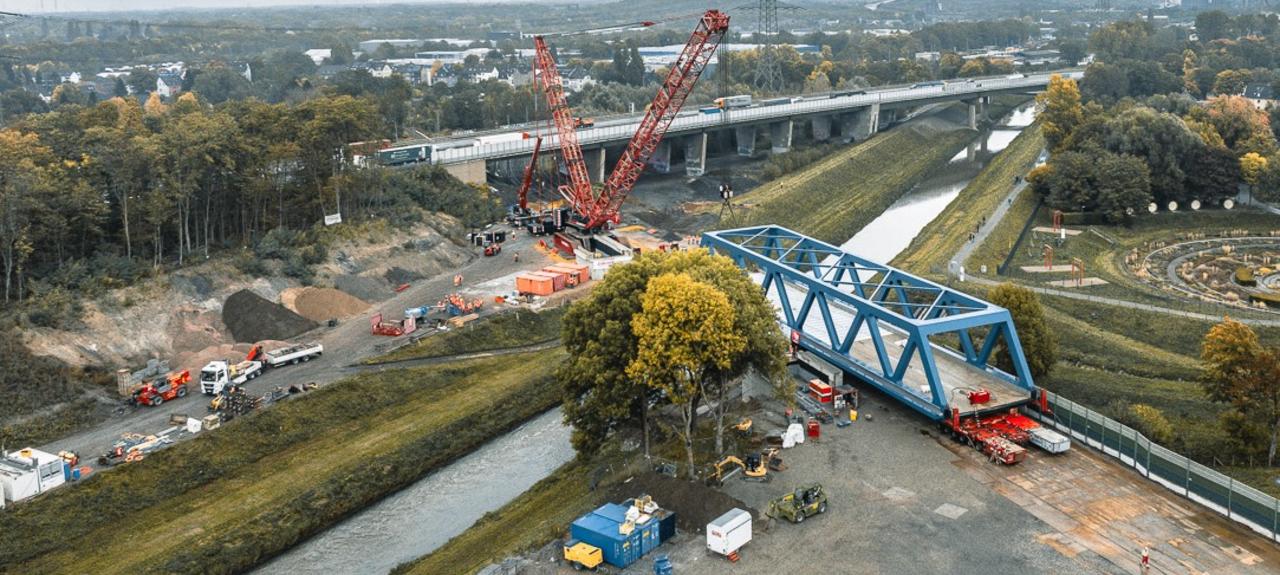Our structural engineering team has been building a railway overpass in Bottrop together with a consortium partner on behalf of DB Netz AG since November 2021.
All work had to be largely completed during the almost one-year lockdown. The final shunting of one of the two overpass bridges recently took place.
A special feature of this was the three different shunting techniques that were used: SPMT shunting, strand shunting and lifting with a large crane.
Shunting techniques briefly explained:
Strandshunting
The strand lifter is a hydraulic device for pulling or lifting heavy loads. The forces are transmitted from the piston of the device to the loads to be moved via strands (wire ropes). Strand jacks are usually used in groups that are operated by a common control unit. Hydraulic pump units are required for the power supply.
SPMT skidding
SPMTs are self-propelled modular vehicles that are used for heavy-duty projects. The mobile platforms can use hydraulic pumps to transport the heavy bridge components or, in the case of the bridge insertion in Bottrop, the entire bridge.
Lifting
A large crane is used for lifting. When the bridge was moved, the crane was attached to the bridge before it reached the tipping point. In this case, the crane merely took on the task of holding the bridge before it tilted. The actual shifting was carried out by the strands.
Take a look at the construction site video!
The three shunting techniques are also briefly shown.
<iframe width="928" height="522" src="https://www.youtube.com/embed/93RjvLEbDIc" title="Infra-West Bottrop Brückeneinschub EÜ Emscher" frameborder="0" allow="accelerometer; autoplay; clipboard-write; encrypted-media; gyroscope; picture-in-picture; web-share" referrerpolicy="strict-origin-when-cross-origin" allowfullscreen></iframe>


 DE
DE
 SWE
SWE
